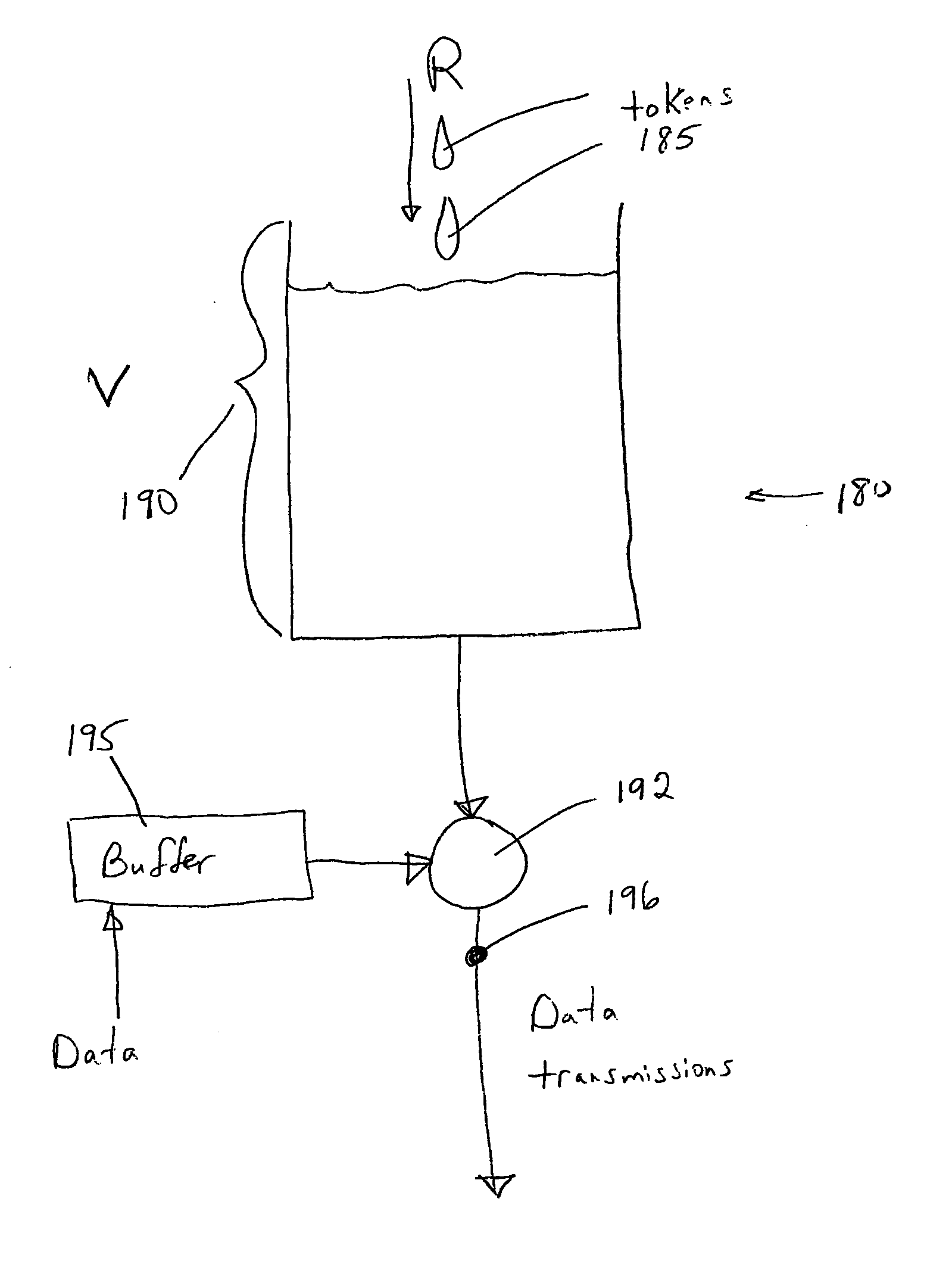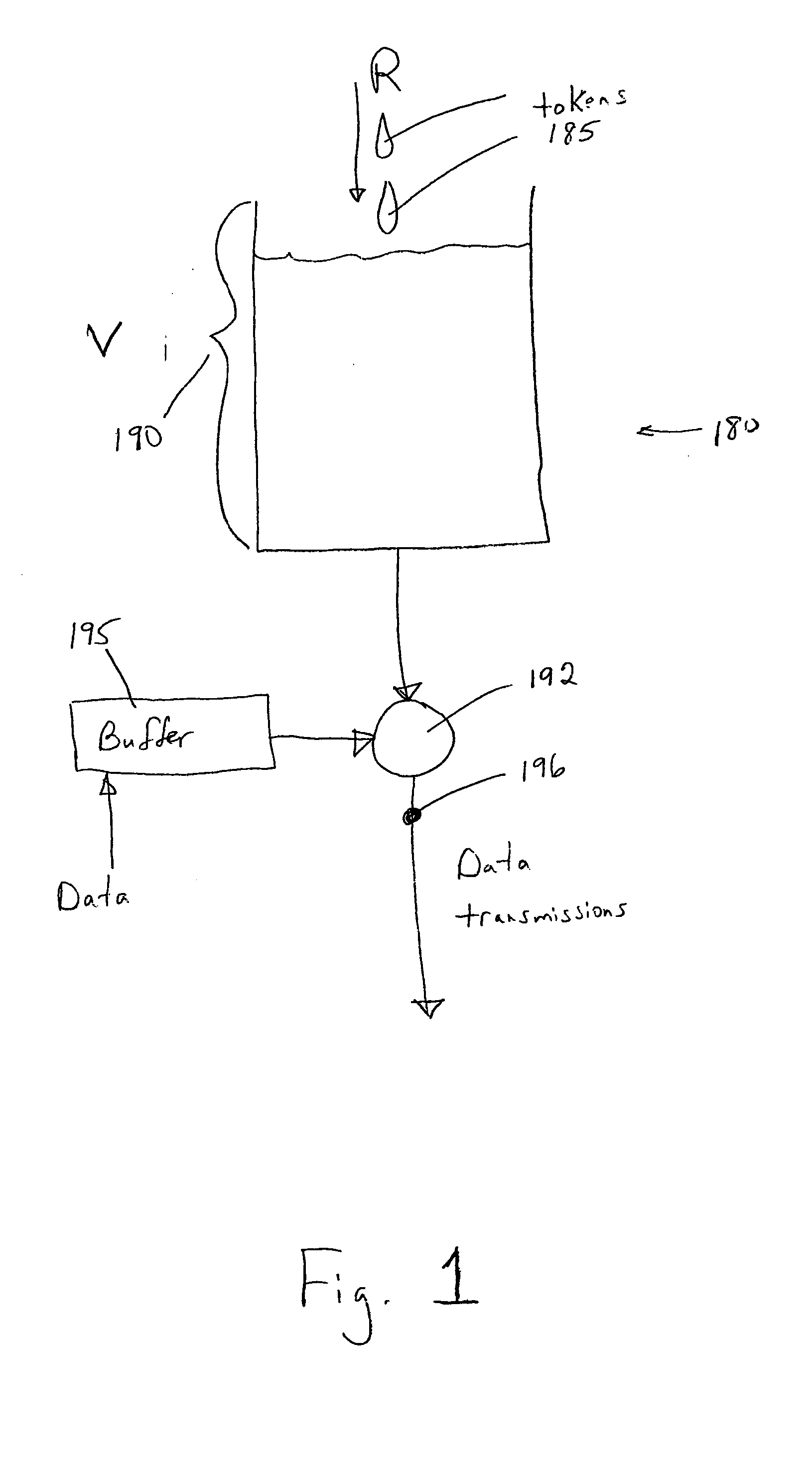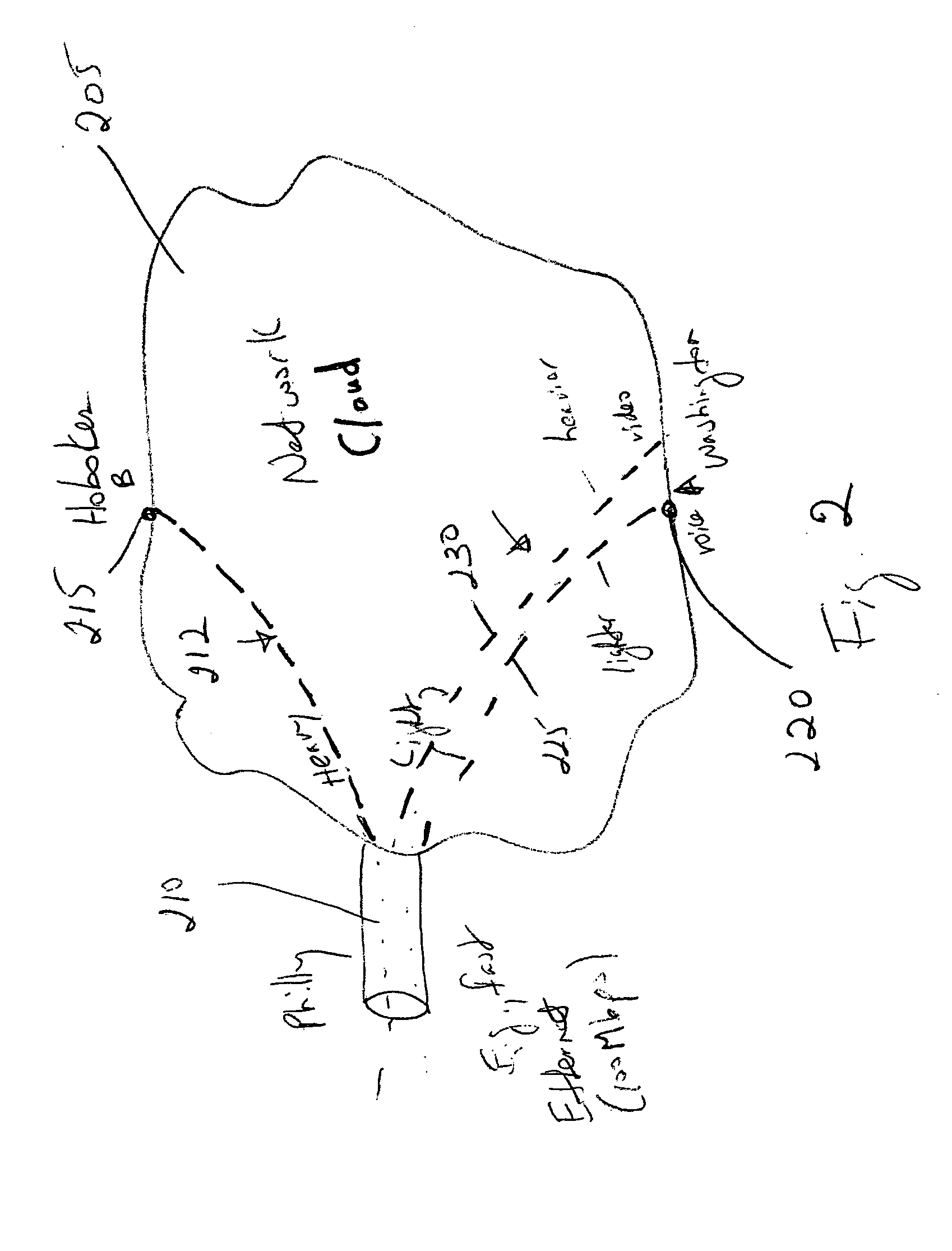Methods and devices for flexible bandwidth allocation
a bandwidth allocation and flexible technology, applied in the field of network technology, can solve the problems of inability to retrieve, metered or limited use of network resources by customers, etc., and achieve the effect of lowering the service charg
- Summary
- Abstract
- Description
- Claims
- Application Information
AI Technical Summary
Benefits of technology
Problems solved by technology
Method used
Image
Examples
Embodiment Construction
[0041] In the following description, numerous specific details are set forth in order to provide a thorough understanding of the present invention. It will be obvious, however, to one skilled in the art, that the present invention may be practiced without some or all of these specific details. In other instances, well known process steps have not been described in detail in order not to unnecessarily obscure the present invention.
[0042]FIG. 2 illustrates data network 205, which may be any type of network including a cable network, a TCP / IP network, a Fibre Channel network, etc. In this example, information is traveling between network device 210 (located, for example, in Philadelphia) and network devices 215 and 220 (located in Hoboken and Washington, respectively).
[0043] Network 205 may provide multiple services over the same physical interface, e.g., for voice information 225 and video information 230. In order to provide a basis for allocating network resources and for charging...
PUM
 Login to View More
Login to View More Abstract
Description
Claims
Application Information
 Login to View More
Login to View More - R&D
- Intellectual Property
- Life Sciences
- Materials
- Tech Scout
- Unparalleled Data Quality
- Higher Quality Content
- 60% Fewer Hallucinations
Browse by: Latest US Patents, China's latest patents, Technical Efficacy Thesaurus, Application Domain, Technology Topic, Popular Technical Reports.
© 2025 PatSnap. All rights reserved.Legal|Privacy policy|Modern Slavery Act Transparency Statement|Sitemap|About US| Contact US: help@patsnap.com



